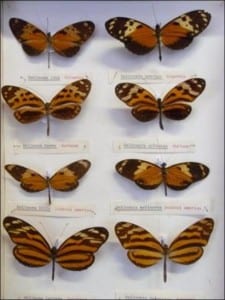Specimen of the Week: Week Thirty-Six
By Emma-Louise Nicholls, on 25 June 2012
 Since I went to Malta last year and discovered that the natives are called Maltesers, which re-awoke my love of the smaller, rounder, more chocolatey version, most days I give in to the tasty delights of a packet for my lunch. Today I discovered that the box version made for ‘sharing’ (a silly notion) was on offer for £1. Yes, a pound my friend. Which is only just a wee bit more than the teeny-tiny-portion-sized packet they reckon is sufficient for a single person’s lunch hour. Single as in, one, not single as in not in a relationship, which may or may not in fact be a reason to get the box-for-sharing-size anyway. The good mood that followed from my victory over supermarket confectionery size to price ratio made me want to pay it forward and thus, this week you get eight for the price of one. This week’s specimens of the week are…
Since I went to Malta last year and discovered that the natives are called Maltesers, which re-awoke my love of the smaller, rounder, more chocolatey version, most days I give in to the tasty delights of a packet for my lunch. Today I discovered that the box version made for ‘sharing’ (a silly notion) was on offer for £1. Yes, a pound my friend. Which is only just a wee bit more than the teeny-tiny-portion-sized packet they reckon is sufficient for a single person’s lunch hour. Single as in, one, not single as in not in a relationship, which may or may not in fact be a reason to get the box-for-sharing-size anyway. The good mood that followed from my victory over supermarket confectionery size to price ratio made me want to pay it forward and thus, this week you get eight for the price of one. This week’s specimens of the week are…
**!!!The Nymphalidae Butterflies!!!**
1) There are eight times the normal number of specimens I delight you with on a Monday morning, and even more fantastically, they are all different species. How’s that for specimen-philanthropy? Each species belongs in the Nymphalidae, of which there are over 5,000 species, including ones you are probably very familiar with such as the monarch, red admiral, and peacock. Nymphalidae are found all over the world.
2) The four specimens on the right of the image belong to the genus Heliconius. Species of this genus are awesome– when they are just a cute little baby pre-butterfly-shaped ‘butterfly’, called a larvae, they eat passion flowers called passifloras, that are poisonous to many species of vertebrates and invertebrates. Not to baby pre-butterfly-shaped Heliconius ‘butterflies’ though. These Ip-Man-esque larvae are able to detoxify the poison and deposit it in their own body tissue. As a result of this strange cleptomanic-behaviour, when the baby pre-butterfly-shaped Heliconius ‘butterfly’ hatches into an adult butterfly-shaped Heliconius butterfly, it is toxic to predators. Brilliant.
3) I’d say that makes Heliconius pretty cool. But what of the other four specimens in the box? They are the brains to match the brawn. They belong to a genus called Melinaea. Unlike Heliconius, baby Melinaea were never dared by mischievous friends to eat poisonous passifloras back in the early part of their evolution. However, they did realise that being poisonous had certain beneficial predator deterrent qualities. Aware of their appetizing snack-size appeal, they decided to copy the example set out by their slightly mental poison-munching cousins, and evolved the colours and patterns on their wings to mimic the poisonous Heliconius. Take a close look at the image on the left here, and the one above. Each non-toxic specimen of butterfly on the left, looks impressively similar to the corresponding butterfly on its right, though they are not in the same family. As a result of this mimicry, predators believe that the Melinaeas are also poisonous, and cross them off the menu. Genius.
4) The specimens in this box were collected from the rainforests of Honduras in Central America, and from Surinam and Columbia in South America. Lucky collectors.
5) The predators in need of a “Nymphalidae Identification Guide: what not to eat” publication that these butterflies would otherwise fall prey to include birds, reptiles and amphibians.
One Response to “Specimen of the Week: Week Thirty-Six”
- 1
 Close
Close



The Heliconius flutterbies are also a rather nice example of Müllerian mimicry, where all the poisonous species have come to resemble each other, so that they can all share in the warning given to a predator by a nasty experience with any single one of the species.